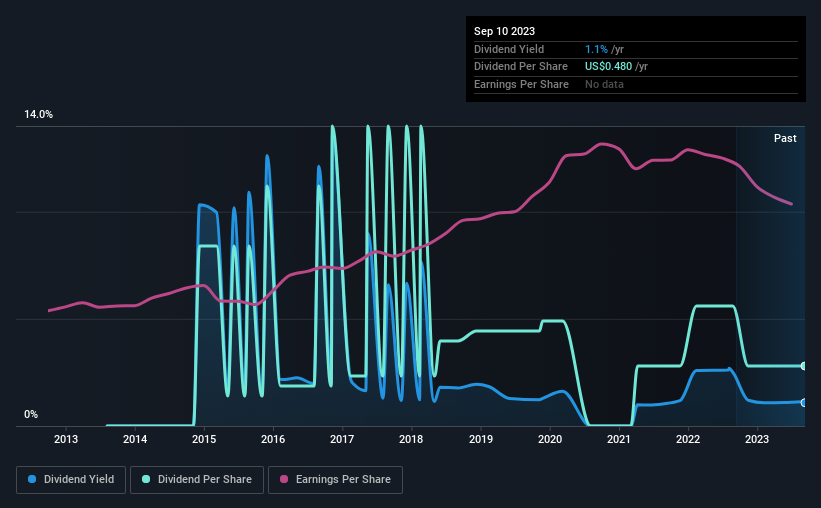It Might Not Be A Great Idea To Buy National Research Corporation (NASDAQ:NRC) For Its Next Dividend
It looks like National Research Corporation (NASDAQ:NRC) is about to go ex-dividend in the next 4 days. The ex-dividend date is one business day before a company's record date, which is the date on which the company determines which shareholders are entitled to receive a dividend. The ex-dividend date is important as the process of settlement involves two full business days. So if you miss that date, you would not show up on the company's books on the record date. This means that investors who purchase National Research's shares on or after the 15th of September will not receive the dividend, which will be paid on the 22nd of September.
The upcoming dividend for National Research will put a total of US$1.00 per share in shareholders' pockets, up from last year's total dividends of US$0.48. Dividends are an important source of income to many shareholders, but the health of the business is crucial to maintaining those dividends. So we need to investigate whether National Research can afford its dividend, and if the dividend could grow.
View our latest analysis for National Research
If a company pays out more in dividends than it earned, then the dividend might become unsustainable - hardly an ideal situation. National Research paid out 51% of its earnings to investors last year, a normal payout level for most businesses. A useful secondary check can be to evaluate whether National Research generated enough free cash flow to afford its dividend. It paid out 84% of its free cash flow as dividends, which is within usual limits but will limit the company's ability to lift the dividend if there's no growth.
It's positive to see that National Research's dividend is covered by both profits and cash flow, since this is generally a sign that the dividend is sustainable, and a lower payout ratio usually suggests a greater margin of safety before the dividend gets cut.
Click here to see how much of its profit National Research paid out over the last 12 months.
Have Earnings And Dividends Been Growing?
Companies with consistently growing earnings per share generally make the best dividend stocks, as they usually find it easier to grow dividends per share. Investors love dividends, so if earnings fall and the dividend is reduced, expect a stock to be sold off heavily at the same time. With that in mind, we're encouraged by the steady growth at National Research, with earnings per share up 4.8% on average over the last five years. A high payout ratio of 51% generally happens when a company can't find better uses for the cash. Combined with slim earnings growth in the past few years, National Research could be signalling that its future growth prospects are thin.
The main way most investors will assess a company's dividend prospects is by checking the historical rate of dividend growth. National Research's dividend payments per share have declined at 11% per year on average over the past nine years, which is uninspiring. National Research is a rare case where dividends have been decreasing at the same time as earnings per share have been improving. It's unusual to see, and could point to unstable conditions in the core business, or more rarely an intensified focus on reinvesting profits.
Final Takeaway
Has National Research got what it takes to maintain its dividend payments? Earnings per share growth has been unremarkable, and while the company is paying out a majority of its earnings and cash flow in the form of dividends, the dividend payments don't appear excessive. It might be worth researching if the company is reinvesting in growth projects that could grow earnings and dividends in the future, but for now we're not all that optimistic on its dividend prospects.
If you want to look further into National Research, it's worth knowing the risks this business faces. To help with this, we've discovered 1 warning sign for National Research that you should be aware of before investing in their shares.
A common investing mistake is buying the first interesting stock you see. Here you can find a full list of high-yield dividend stocks.
Have feedback on this article? Concerned about the content? Get in touch with us directly. Alternatively, email editorial-team (at) simplywallst.com.
This article by Simply Wall St is general in nature. We provide commentary based on historical data and analyst forecasts only using an unbiased methodology and our articles are not intended to be financial advice. It does not constitute a recommendation to buy or sell any stock, and does not take account of your objectives, or your financial situation. We aim to bring you long-term focused analysis driven by fundamental data. Note that our analysis may not factor in the latest price-sensitive company announcements or qualitative material. Simply Wall St has no position in any stocks mentioned.



